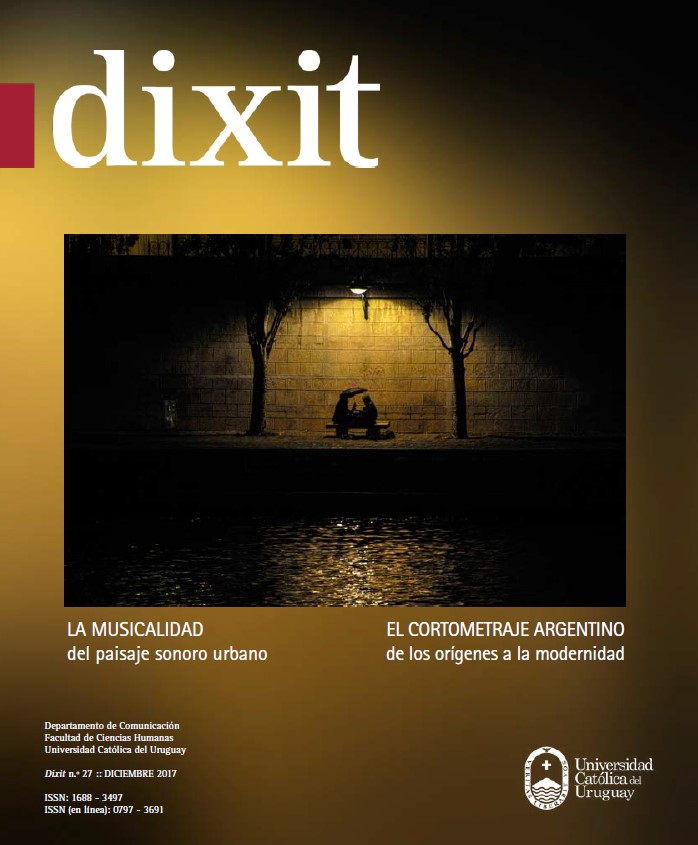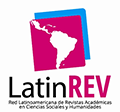The problem of understanding in language and communication: Reflections from a biophenomenological approach
DOI:
https://doi.org/10.22235/d.v0i27.1494Keywords:
language, communication, understanding, intersubjectivityAbstract
In this work, we make a reflection on the role of language in communication, based on understanding. It seeks to understand the language from its onto-epistemological status and from there position a questioning about its intersubjective nature, which leads to question also the communication understood from these premises. The theoretical perspectives of phenomenology, biosemiotics, neurobiology and evolutionary biology are taken as references, and it is concluded that there are two types of language, the social one we know and the individual or subjective, which makes it possible to think of communication as Behavior and expressive act from a subjective and intersubjective dimension that is where the understanding is articulated.
Downloads
References
Damasio, A. (2000). Sentir lo que sucede. Cuerpo y emoción en la fábrica de la consciencia. Santiago de Chile, Chile: Editorial Andrés Bello.
Damasio, A. (2015a). El error de Descartes. La emoción, la razón y el cerebro humano. Ciudad de México, México: Editorial Paidós Booket.
Damasio, A. (2015b). Y el cerebro creó al hombre. ¿Cómo pudo el cerebro generar emociones, sentimientos, ideas y el yo? Ciudad de México, México: Editorial Paidós Booket.
Damasio, A. (2016). En busca de Spinoza. Neurobiología de la emoción y los sentimientos. Ciudad de México, México: Editorial Paidós Booket.
Di Paolo, E. (2013). El enactivismo y la naturalización de la mente. Recuperado de https://ezequieldipaolo.files.wordpress.com/2011/10/enactivismo_e2.pdf
Galarsi, M. F., Medina, A., Ledezma, C. y Zanin, L. (2011). Comportamiento, historia y evolución. Fundamentos en Humanidades, 12(2), 89-102. Recuperado de http://fundamentos.unsl.edu.ar/pdf/articulo-24-89.pdf
Hauser, M. D., Chomsky, N., y Ficht, W. T. (2002). The Faculty of Language: What is, who has it and how did it evolve?. Sciences, 298, 1569-1579.
Hoffmeyer, J. (1997). Biosemiotics: Towards a new synthesis in Biology. European Journal for Semiotic Studies, 2(9), 355-375.
Hoffmeyer, J. (2008). Biosemiotics. An examination into the signs of life and the life of signs. Scranton, PA: University of Scranton Press.
Jacobson, R. (1984). Ensayos de lingüística general. Barcelona, España: Ariel.
Levi-Strauss, C. (1983). Mitológicas IV. El hombre desnudo. Ciudad de México, México: Siglo XXI.
Lotman, I. (1996). La semiósfera I. Madrid, España: Cátedra.
Peirce, C. S. (1987). Obra Lógico-semiótica. Sellected Writtings. Madrid, España: Taurus.
Romeu, V. (2016). Pensando a la comunicación y al fenómeno comunicativo. En B. Chong López (Ed.), Anuario de Investigación de la Comunicación CONEICC (pp. 17-55). Ciudad de México, México: Oak Editorial.
Romeu, V. (2017). La comunicación como comportamiento y acto expresivo. CONEICC, 1(24), 170-189.
Romeu, V. (en prensa). Expresión e interacción comunicativa. Procesos de comunicación y construcción de la confianza. Estudios de Comunicación, 40.
Sebeok, T. A. (2001). Signs. An introduction to semiotics. Toronto, Canadá: University of Toronto Press.
Varela, F. (2005). Conocer. Barcelona, España: Gedisa.
Von Uexküll, J. (1928). Theoretische Biologie. Berlín, Alemania: Springer Verlag.
Downloads
Published
How to Cite
Issue
Section
License
From issue number 32 onwards all contents are licensed under the Creative Commons Attribution 4.0 International License (CC BY 4.0).
Issues number 29-31 are licensed under the Creative Commons Attribution-NonCommercial 4.0 International License.
The contents corresponding to number 28 and earlier editions are under the Creative Commons Attribution-NonCommercial-ShareAlike 4.0 International License.


















